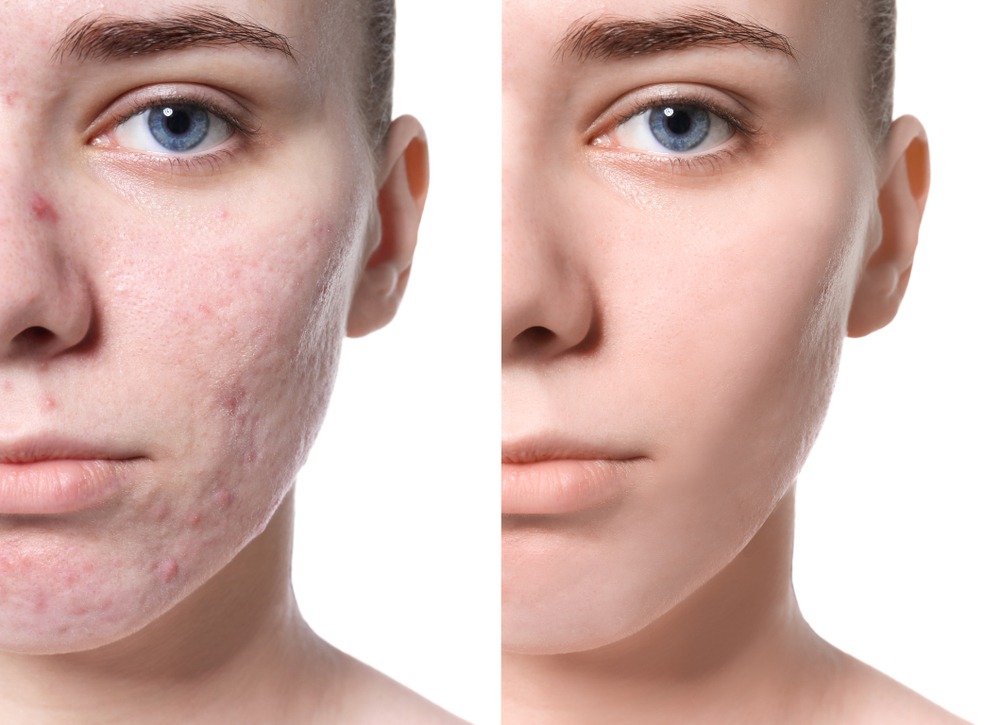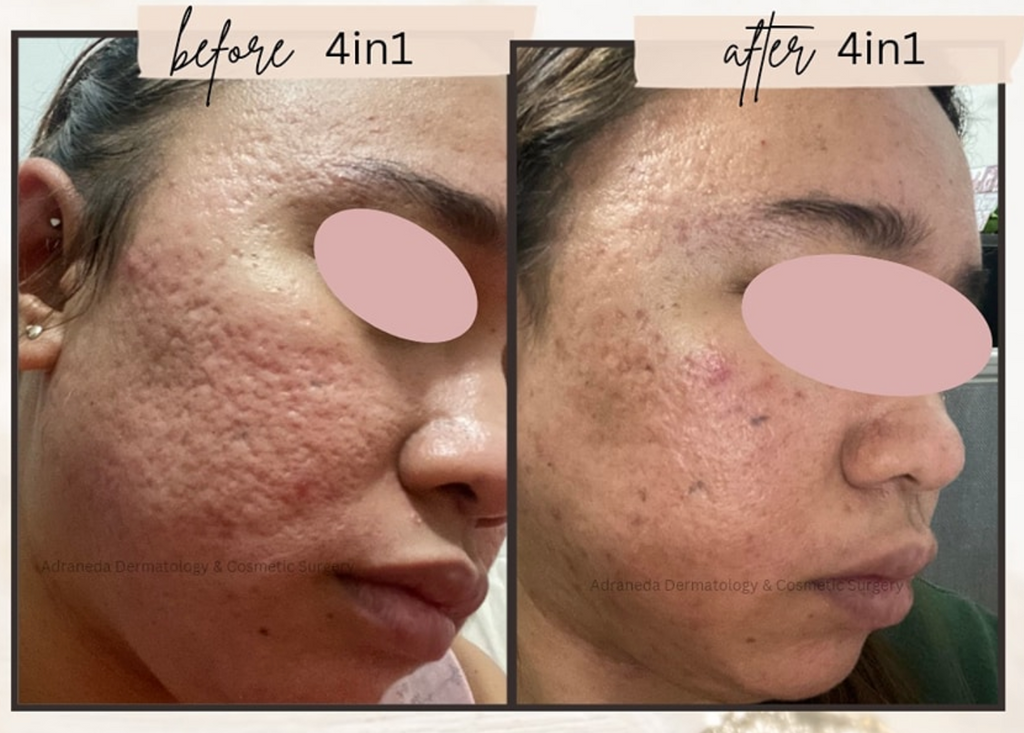Top Acne Treatment for Sensitive Skin: Gentle Solutions for Clear Skin
Top Acne Treatment for Sensitive Skin: Gentle Solutions for Clear Skin
Blog Article
Recognizing the Different Skin Problems and Reliable Treatment Options for Acne Scars
Acne scars stand for a complex interaction of skin problem that substantially impact individuals' self-worth and overall skin health and wellness. Recognizing the distinct kinds of acne scars-- atrophic and hypertrophic-- alongside their underlying causes, is essential for determining reliable treatment methods. Numerous therapeutic alternatives exist, ranging from sophisticated skin-related treatments to natural solutions. The efficacy of these treatments typically pivots on customized analyses by certified specialists. As we discover the landscape of acne scar management, it becomes apparent that the journey toward clearer skin may include greater than just topical options.
Kinds Of Acne Scars

In contrast, hypertrophic marks result from an overproduction of collagen throughout the healing procedure, leading to increased locations on the skin. These scars are often solid and can differ in color, often showing up red or darker than the surrounding skin.
Recognizing these types of acne scars is essential for establishing an effective treatment strategy - skin rejuvenation treatments. Choices may consist of chemical peels, laser therapy, microneedling, or dermal fillers, customized to the specific scar kind. A complete assessment with a dermatologist can aid determine the most suitable intervention, taking right into account the individual's skin type, mark extent, and general skin health
Reasons of Acne Scarring
Scarring takes place as an outcome of the body's all-natural recovery reaction to swelling and injury brought on by acne lesions. When acne kinds, it triggers an inflammatory reaction, bring about the release of various cytokines and growth variables that advertise recovery. However, this process can often bring about too much tissue formation or poor fixing, leading to marks.
The main sources of acne scarring consist of the extent of the acne itself, duration of the sores, and private skin types. Extreme inflammatory acne, such as blemishes and cysts, is most likely to cause scarring due to deeper cells damage. Furthermore, inappropriate handling of acne sores, such as pressing or selecting, can exacerbate tissue injury and inflammation, boosting the likelihood of scarring.
Hereditary predisposition also plays a significant duty; people with a family members background of scarring are at a higher threat. Additionally, skin type and color can influence mark development, as darker complexion might experience post-inflammatory hyperpigmentation, while lighter skin may establish atrophic scars.
Ultimately, comprehending these causes is important in managing acne and minimizing the capacity for scarring.

Therapy Choices for Scarring
Reliable treatment options for acne scarring differ depending upon the kind and severity of the marks. Typically classified right into atrophic, hypertrophic, and keloid scars, these conditions need customized approaches for optimal outcomes.
For atrophic marks, which are characterized by a loss of tissue, treatments such as chemical peels, microdermabrasion, and laser therapy are frequently employed. These techniques promote skin renewal and boost collagen visit this site manufacturing, thus enhancing skin structure. Subcision, a minimally intrusive treatment, can also work by damaging up fibrous bands beneath the skin.
Hypertrophic and keloid scars can be more challenging to deal with. Choices include corticosteroid shots to reduce inflammation and squash the scars. In many cases, cryotherapy or laser therapy may be advised to lessen their appearance.
Surgical choices are offered for severe scarring, where excision or skin grafting might be needed. It's essential for people to speak with a skin doctor to examine their certain scar kind and go over the most suitable therapy strategy. Integrating multiple treatments commonly generates the very best outcomes, ensuring that each client's one-of-a-kind skin problem is addressed properly.
Home Treatments and All-natural Solutions
All-natural solutions and home solutions can supply an accessible approach for people seeking to boost the appearance of acne scars (acne scars). Various active ingredients discovered in the home kitchen area have actually demonstrated prospective benefits in boosting skin texture and advertising recovery

One more effective alternative is lemon juice, which serves as a natural exfoliant and can lighten hyperpigmentation. Nevertheless, it must be made use of carefully, as it may create photosensitivity. Oatmeal masks are likewise valuable; their mild peeling can help eliminate dead skin cells while soothing inflammation.
Vital oils, such as tea tree oil and lavender oil, can additionally support mark recovery due to their antimicrobial buildings. It is crucial to execute a patch test prior to applying any kind of solution to guarantee there are no negative responses. These natural remedies can be a complementary technique in the trip more tips here to reduce acne marks.
Preventing Future Scarring
Embracing a proactive approach to skincare can dramatically reduce the danger of developing future acne marks. Among the essential approaches is to handle acne effectively as it emerges. This involves making use of non-comedogenic skincare products and drugs suggested by skin specialists that target acne without aggravating the skin. Routine cleansing, peeling, and hydration can aid preserve skin health and wellness and protect against blocked pores.
Furthermore, preventing the lure to press or pick acne sores is important, as read this can bring about swelling and subsequent scarring. Instead, individuals must concentrate on applying topical treatments that promote recovery and decrease inflammation. Active ingredients such as salicylic acid, benzoyl peroxide, and retinoids are recognized for their efficiency in handling acne and reducing scars.
Sunlight security is one more essential part; direct exposure to UV rays can dim marks and restrain recovery. Using a broad-spectrum sun block daily can reduce these effects.
Last but not least, preserving a healthy and balanced diet plan abundant in anti-oxidants and remaining hydrated assistances skin regeneration. By implementing these safety nets, people can substantially lower their threat of future scarring and promote total skin health and wellness.
Conclusion
In final thought, an extensive understanding of acne marks, incorporating both hypertrophic and atrophic kinds, is essential for effective treatment methods. Consultation with a skin doctor continues to be vital to design individualized approaches that consider specific skin types and scar seriousness, eventually improving the effectiveness of scar management techniques.
Acne scars represent an intricate interaction of skin problems that dramatically influence people' self-confidence and general skin health and wellness. The two primary categories of acne scars are atrophic and hypertrophic scars. These scars are further identified right into 3 subtypes: ice choice scars, which are narrow and deep; boxcar marks, which are wider and have well-defined sides; and rolling scars, which produce a wave-like appearance due to uneven skin appearance.
A comprehensive consultation with a dermatologist can aid figure out the most proper intervention, taking into account the person's skin type, scar extent, and general skin health and wellness.
Consultation with a dermatologist continues to be imperative to create customized approaches that take into consideration private skin types and mark seriousness, ultimately boosting the effectiveness of scar monitoring methods.
Report this page